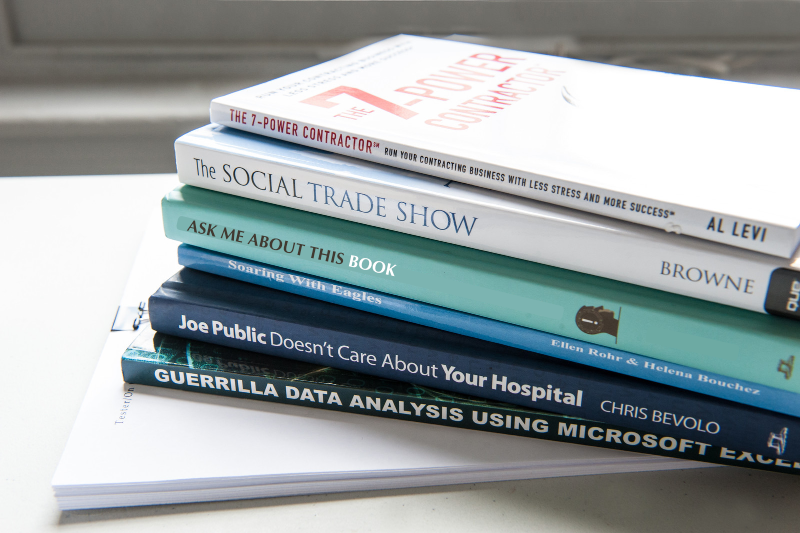
So you want to write a non-fiction book? Awesome. Well, how exactly are you going to do that? If your friends and family are saying stuff like, “Just start writing!” or “Just get the ideas down, you can organize them later!” or “If you build it they will come!”
Don’t listen to them.
If you do that, chances are good you’ll be writing and writing without ever ending up with a book. Your brain will feel great because it’s in action. The problem is, the action at that point won’t driving toward any specific outcome. Better: before you write word one, take some time to define your goal and create a plan.
Remember, a book is a project. So, what do you want out of this book? What does success look like? What kind of book is it? Is it a career capstone book, where you look back on your career and capture your wisdom one place so it can be shared with others? Or is it a $25 business card that you’ll send to prospects to introduce your thinking so you can more easily sell your professional services? Or a combo platter. Or maybe it’s none of the above, rather a tribute biography of a beloved mentor, or a memoir.
Take some time to think about it. Talk it through with others. Do some research if needed. Then make a decision.
Once you’ve decided what kind of a book you think it is, create a mission statement for it. A one-page document that spells out what kind of book it is, what the book is about, why it needs to exist and what the one concept is that you want people to walk away with when they’re done reading (aka controlling idea). Once you have that, write down what the major buckets of information needed are and what order they should go in and use that as your working table of contents.
Refer back to this mission document when you feel lost or frustrated and to remind yourself why (the *@#$%!) you even started this project and what you were thinking as you are systematically filling up the buckets listed in the working table of contents.
Not to worry, there’s plenty of creativity to be had in the writing and you’ll have 40,000 – 50,000 words to stretch out. But it’s a lot easier to be creative and the creative product will be a lot better if you establish some guardrails early on. Because not only will you know what belongs in the book, it’ll also be clearer which ideas you need to leave out of it.
You’ve read them. I call them “kitchen sink” books. That is where the author had dozens of legitimately great ideas and felt like every single one of them had to be in the book. And either wouldn’t listen to their editor, or didn’t have one.
Here’s the problem with that. You’ve only got the reader for maybe three hours. They’re not interested in a million disparate ideas. They’re hoping to be inspired. They don’t want to read a textbook or sift through a jar of jelly beans. They want to go with you on a cohesive journey. Thus, your job is to create a book that will be a good experience and in the process make a new friend.
People like to do business with people they know and like. When someone reads your book, he or she has already spent some time with you. When that person is looking to improve their business, they think of you because they have had this enjoyable experience with you on an airplane or in their precious leisure time.
That’s also why it’s important to write a good book and not just mail it in. The care you take in creating the book is an act of respect for the reader and a foreshadowing of what it’s going to be like to work with you. Think about that!
To end up with a good book that gets done in a timely manner requires some upfront consideration, decisions, and planning. It might not feel like legit book writing to you but it will certainly make the writing easier when the time comes.